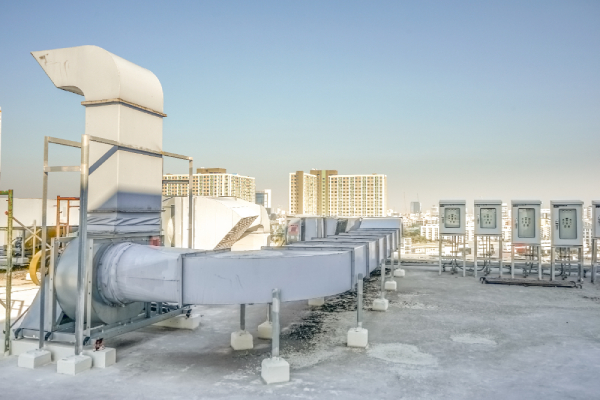

With rising global temperatures, many regions are experiencing a surge in demand for air conditioning systems to maintain comfortable indoor environments. Traditionally, buildings have relied on individual air conditioning units, which often lead to high electricity consumption. To address the growing need for energy-efficient cooling, cities worldwide are increasingly adopting more sustainable solutions, such as District Cooling Systems (DCS).
A District Cooling System (DCS) involves producing chilled water at a central facility and distributing it through a network of insulated underground pipes to multiple buildings. Each building connected to the system is served by an Energy Transfer Station (ETS), which typically uses heat exchangers to chill the water from the district mains. This chilled water is then used within the building’s cooling system for air conditioning and process cooling. This eliminates the need for each building to install its own chiller unit, allowing operators to purchase chilled water from the central provider instead.
District Cooling Systems typically include central chiller plants, pumps, valves, and distribution pipework. The central plants generate chilled water, often using dedicated chiller units. Some systems also utilize free cooling methods, drawing water from natural sources such as rivers or lakes. Successful implementations of DCS have been seen in various parts of the world, such as one project where water is chilled and transported over a 50 km distance to serve millions of square meters of office and commercial spaces. Another example is one of the largest district cooling systems in the Middle East, which provides cooling to an expansive mixed-use development.
The SINET Fluid Flow Simulator is an essential tool for designing and optimizing District Cooling Systems. By simulating the entire cooling network, including the central chiller plants, underground distribution pipes, and Energy Transfer Stations, SINET ensures the system operates with maximum efficiency across large and complex networks.
For instance, in a simulated District Cooling System modeled with SINET Fluid Flow, chilled water is supplied from two central cooling plants through 25 km of pipeline, serving 40 Energy Transfer Stations. The SINET simulator accurately models the pressure, temperature, and flow of chilled water throughout the system, ensuring smooth and efficient delivery of cooling to all buildings.
District Cooling Systems are known for their energy efficiency. Compared to traditional individual water-cooled or air-cooled air conditioning systems, DCS can consume up to 30% less electricity. This translates to both cost savings for building operators and significant reductions in CO2 emissions and environmental impact.
Moreover, District Cooling Systems are highly scalable and reliable. SINET Fluid Flow allows engineers to optimize the design, ensuring that the system can accommodate future demand increases while maintaining high efficiency. Additionally, SINET simulates the effect of factors like pipeline roughness, ensuring that the system continues to perform optimally over time.
In conclusion, District Cooling Systems, when optimized using SINET Fluid Flow, provide a reliable, energy-efficient, and sustainable cooling solution for urban areas. These systems reduce power consumption, minimize CO2 emissions, and lower maintenance costs, offering long-term benefits for both building owners and the environment. The SINET Fluid Flow Simulator plays a critical role in designing and managing these systems, ensuring they operate at peak efficiency while addressing the cooling needs of modern urban developments.